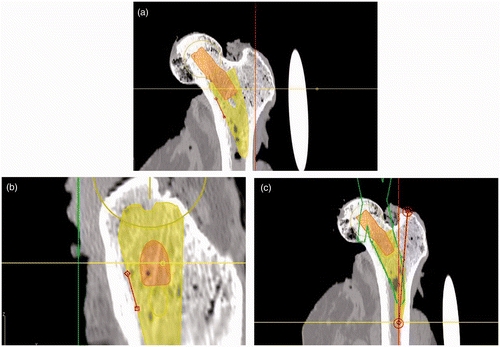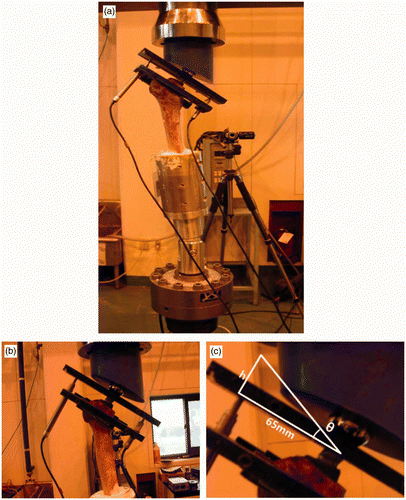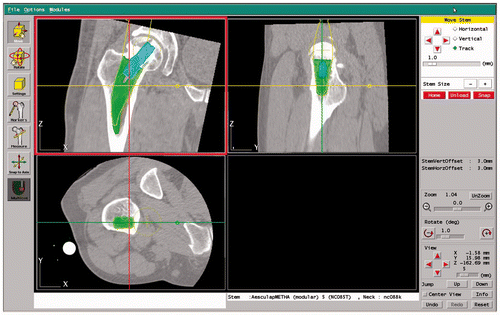Figures & data
Figure 2. (a) Mediolateral stem alignment in the anteroposterior view was defined as the angle between the medial margin of the stem and the anatomical axis of the femur. (b) Anteroposterior stem alignment in the lateral view was defined as the angle between the anterior margin of the stem and the anatomical axis of the femur. (c) Vertical seating of the stem was defined as the distance from the apex of the greater trochanter to the distal tip of the stem.

Figure 3. (a) The electro-hydraulic universal test machine with LVDT sensors. (b) LVDT jigs for connecting LVDT sensors to the implant and femur. (c) Trigonometric calculation of the rotating angle of the stem.

Figure 4. Box-and-whisker plots showing differences in implant position between the manual rasping and robotic milling groups. (a) Mediolateral alignment (ML); (b) anteroposterior alignment (AP); and (c) vertical seating (VS).

Table I. Differences in stem position between preoperative planning and postoperative CT images (median with interquartile range)
Figure 5. Box-and-whisker plots showing differences in implant motion between the manual rasping and robotic milling groups. (a) Migration in the proximal-distal direction (v); (b) migration in the mediolateral direction (h); and (c) rotational angle (θ).

Table II. Magnitudes of migrations in the proximal-distal direction (v), migrations in the mediolateral direction (h), and rotations (θ) at the end of each load step
